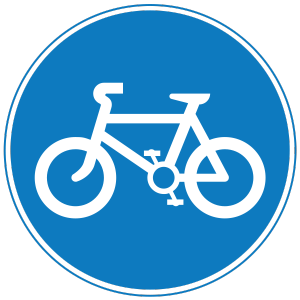 We all know the phrase “Share the Road” by now. It is a campaign that has spread nationwide with the intent to get motorists to share the road with cyclists and other forms of non-vehicle traffic. It is important that all motorists are doing exactly that. Safety should be on everyone’s mind and sharing the road provides safety to those who are more exposed on the road. Some people find it very difficult to share the road with cyclists or other forms of non-vehicle traffic. When this animosity occurs, it is often due to the fact that motorists don’t understand the rules and laws cyclists have that differ from their own.
We all know the phrase “Share the Road” by now. It is a campaign that has spread nationwide with the intent to get motorists to share the road with cyclists and other forms of non-vehicle traffic. It is important that all motorists are doing exactly that. Safety should be on everyone’s mind and sharing the road provides safety to those who are more exposed on the road. Some people find it very difficult to share the road with cyclists or other forms of non-vehicle traffic. When this animosity occurs, it is often due to the fact that motorists don’t understand the rules and laws cyclists have that differ from their own.
As you may be understanding, cyclists are required to abide by a couple different rules than motorists. This can be for many reasons, but safety is definitely the biggest. Since bicycles are treated the same on the road, most of the laws are similar but there are a few that differ from motorists. Here are a few examples:
Intersection Laws
To motorists, a red light at an intersection means stop, and then proceed when the light turns green. Cyclists are held to the same law, but only to a certain degree. That is, cyclists are able to proceed through the red light after stopping for 90 seconds and if the light does not detect their presence they may continue through the intersection–only if it is safe to do so–even if the light has not turned green. This can frustrate motorists because for vehicles, they have to wait out the red light.
Passing Laws
Motorists can get frustrated when they are “stuck” behind cyclists who are riding in a group or aren’t far enough to the right as the motorist would like. Utah imposes the FTR (Far to the Right) Law to cyclists; which means they are required to ride as far to the right of the road as safely possible. In addition, cyclists are required to follow the MSP (Mandatory Side Path) Law. This means that if available, cyclists need to ride in the bike path or designated lane. In these situations, motorists are required to give a buffer of at least 3 ft. of safe passing distance between the car and bicycle. New laws in Utah allow motorists to cross the double-yellow lines into oncoming traffic and also use the center turn lane to pass a cyclist or a slow moped. These new laws help give the motorist and cyclist more safety during passing maneuvers.
Some laws are the same for cyclist and motorist; however, it is important to know the differences between the ones that aren’t. We remind all motorists to share the road and to pass only when it is safe. Reducing the animosity between motorist and cyclist could reduce the chances of road rage and rage against cyclists that are more exposed on the road.
If you have been hurt in a cycling accident due to the negligence of another driver, Christensen & Hymas is here to help you. Cyclist accidents can result in major injuries that could cause high medical debt. To get the help you need to recover and pay for the medical bills you have accrued after an accident, call (801)506-0800 for a free confidential consultation. You deserve to be compensated for the pain and suffering you have endured.
Image courtesy of Wikipedia.
